FOOD RAIDERS
Foraging at Durban’s eclectic markets
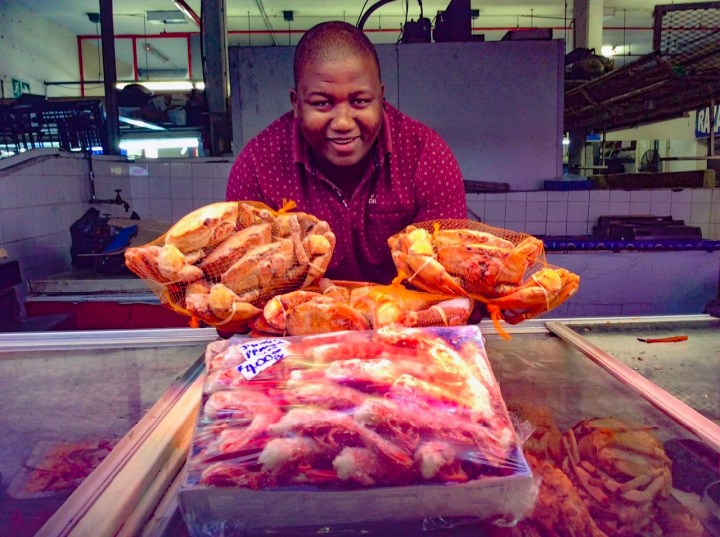
Spices mixed with love, darling. Tender cow cheeks. Real chickens. Sold live. Hot tips on habanero from a cool chilli sage. Recipes on the fly for Mozambique crab curry, a prawn-stuffed rock cod, and smileys ready to prep and serve up Soweto-style. Durban still does food markets best.
London’s Borough Market has existed in one form or another for around 1,000 years; Krakow’s Stary Kleparz market for about 800. Getting more exotic, Guangzhou, China is noted for its culinary adventures involving heritage, tradition and markets. When a friend and I spent a week there we deemed it wise to become vegetarian. But as nobody understood us and we didn’t understand them, what was put in front of us usually had legs or a beak and seldom failed to surprise.
Markets in Thailand and Laos. Food markets. Old markets. We (the royal – but there’s good reason to generalise) are magnetised by markets on our travels.
To market, to market, to buy a fat pig. Or porcine charcuterie. Even sans pork, who can resist a market?
So what about when we’re home?
What about our 109-year-old Early Morning Market, Durban’s oldest? Our spice and all-things-nice Victoria Street Market. Across narrow Fishmonger Lane our Victoria Street Seafood and Meat market (smileys and walkie-talkies included).
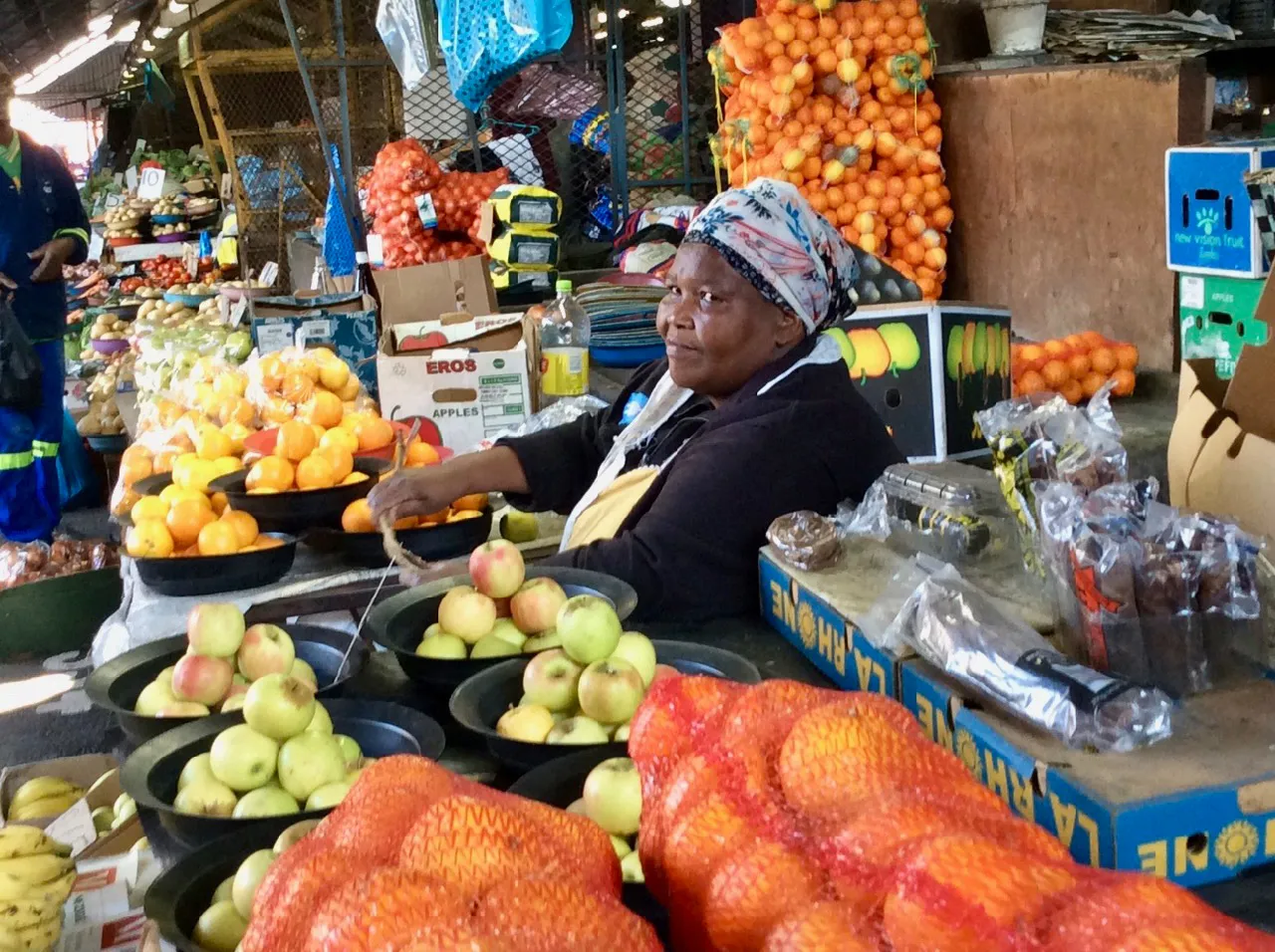
You can see citrus is in season at the Early Morning Market. Photo: Wanda Hennig
Then there’s the Bovine Head Cooking Market. Almost as “foreign” as the markets of Guangzhou, Thailand and Laos for some of us.
According to Richard Dobson, co-founder of Markets of Warwick, 15,000 tourists have visited the Warwick Avenue markets since the non-profit launched in 2010 offering tours of the Warwick hub and its nine markets.
This being TGIFood, the spotlight here is these four food-focused markets.
Which then begs the question: do you have memories of shopping for veggies and spices and curry leaves at the Early Morning Market? Because I do. As a child, with my dad. And as an adult, with my friend Carole.
Memories of my dad selecting from among the refrigerated chickens-for-sale and sniffing the bums (aka “parson’s nose”) for who-knows-what unsavoury or tantalising aroma. Of Carole filling her Kenyan kiondo bag with leafy greens and whatever else was in season. Of us talking to the traders. Asking them how to cook this. And that. Of smells and sights and noise and flavours.
“Why did you stop going to the Early Morning Market?” I asked Carole this week.
“Well, you went to California,” she said. “It could have been that. And fresh produce became more easily available. Then parking got more difficult. I’m not really sure. Different things…”
Although she vividly remembered the news stories and headlines of the time, she didn’t think it had anything to do with the 2009 pre-FIFA World Cup abomination when a powerful group of City officials attempted to strong-arm the historic Early Morning Market heritage site out of existence in a quest to replace it with a commercial shopping mall and taxi rank.
To see what I mean if you, like me, weren’t around at the time, click through and watch We Came in Spring Carts, a documentary by Durban’s Clive Read that records the stand-off between the City and the traders. I saw a screening last weekend. It’s what got me on a food foraging mission to our markets on Monday morning.
OK. So, for starters, access and parking is easy.
Along Denis Hurley Street and into the commercial garage under the Victoria Street Market, directly across from the Denis Hurley Centre.
First stop, up and out the parking, is the Seafood and Meat Market. Not listed among the hub’s nine markets – too commercial and functional I guess – but for buying fresh stuff it ranks tops alongside the Early Morning Market.
Among the seafood, Nadia Essop immediately becomes my guide. Tells colleague Thando Gaza (main photo) to hold the large orange crabs, from Mozambique, for my picture. The crabs piled into fridges along with plump prawns on ice, these from Mozambique and Argentina.
Essop has been here 16 years, running the family fish business. Got into it through her husband’s father, who got into it through his father, before him.
Within seconds she’s telling me how I can make an Indian crab curry.
“With hot masala spice in which you will braise your garlic, onions, curry leaves, a little jeera and mustard seeds. After a while, add your fresh tomato and a bit of tomato puree. Let it simmer slowly. Wash and clean the crab. Crack open the body shell and the leg shells. Chop it into portions. Put these into the gravy mix. Cook nice and slow for 20-25 minutes – for the gravy to soak in. Add some dhania before you serve with hot rice, bread or roti. And enjoy.”
Then she leads me around to inspect the stalls. To see the fresh fish, just off the boat. The deep-water slinger Paulos Nhanala holds up for us to inspect and tells me he would fry or make a curry with.

Paulos Nhanala with fresh slinger straight off the boats. Photo: Wanda Hennig
Like others he has for sale, I have a choice of buying them sliced, butterflied or filleted.
I walk with Essop past the crates of small fish just in from the seine netters. To Gorie Khan’s fish stand where Sam Cele pulls out a rock cod for our picture.
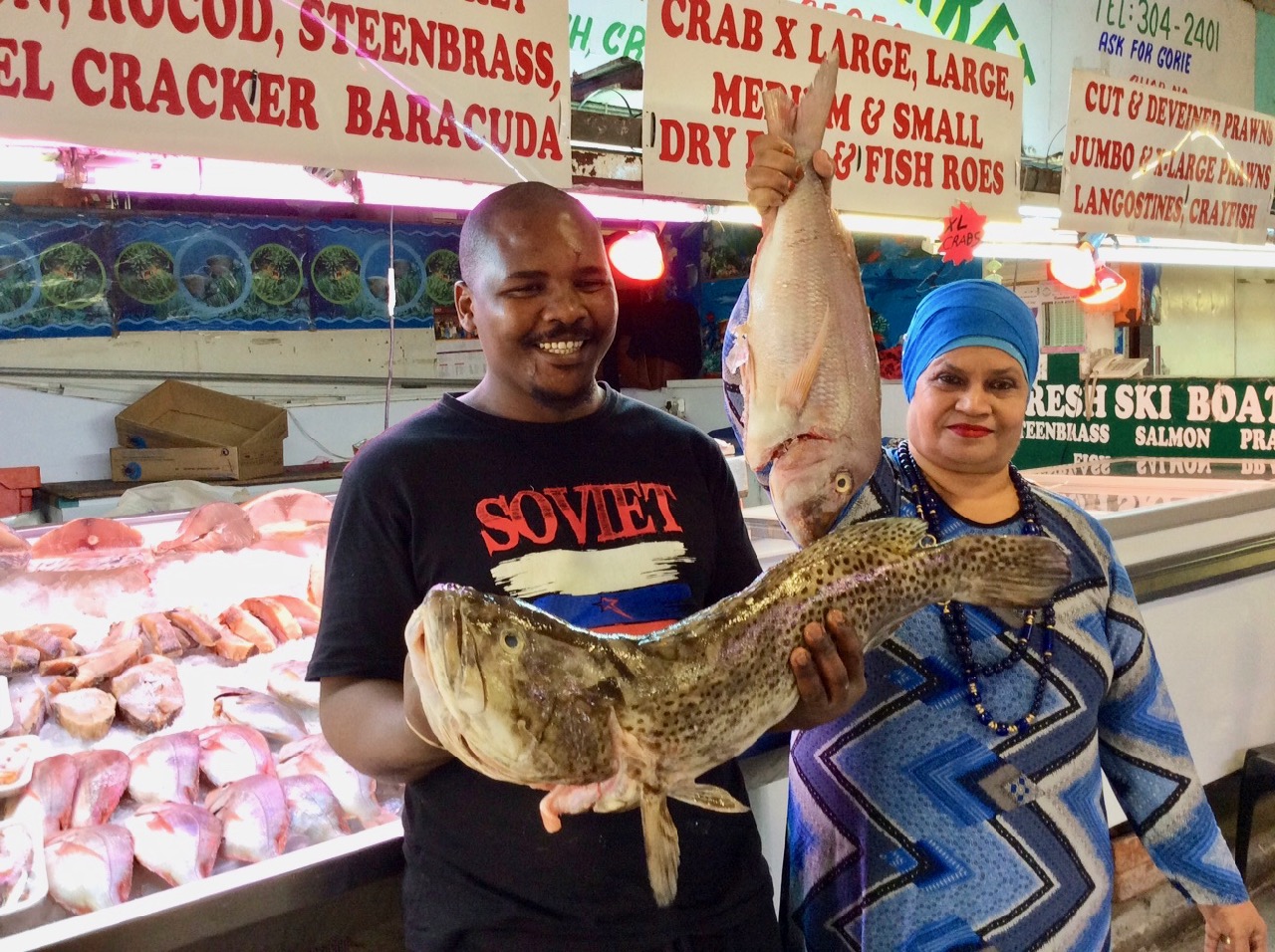
Sam Cele with a freshly caught rock cod and Gorie Khan: in the family fish business all her life. Photo: Wanda Hennig
Khan, now 66, says she’s been in the fish game all her life. “My dad had a little fish shop in the old market that burned down. We moved here after my dad passed. With my brothers, we bought four shops. Built up the fish business. All the children and grandchildren are involved.”
If I buy the rock cod: “We can fillet it for you, spice it with lemon, black pepper and salt and do a prawn filling, into the belly. We will give it to a customer prepared like that, in foil, ready to cook on a braai in the charcoal at low heat.”
I remember this market, going back, for its heads and other nose-to-tail bits.
Nomcebo Thembu, a 10-year market veteran, says she would either boil the sheep heads (smileys) she’s holding with spices and onions. Or make a curry.
But grilling them “Soweto-style smiley” is a growing trend, according to meat-stall proprietor Annelene Silvester. Unnecessarily adding: “You find things here you would never find at another butchery.”
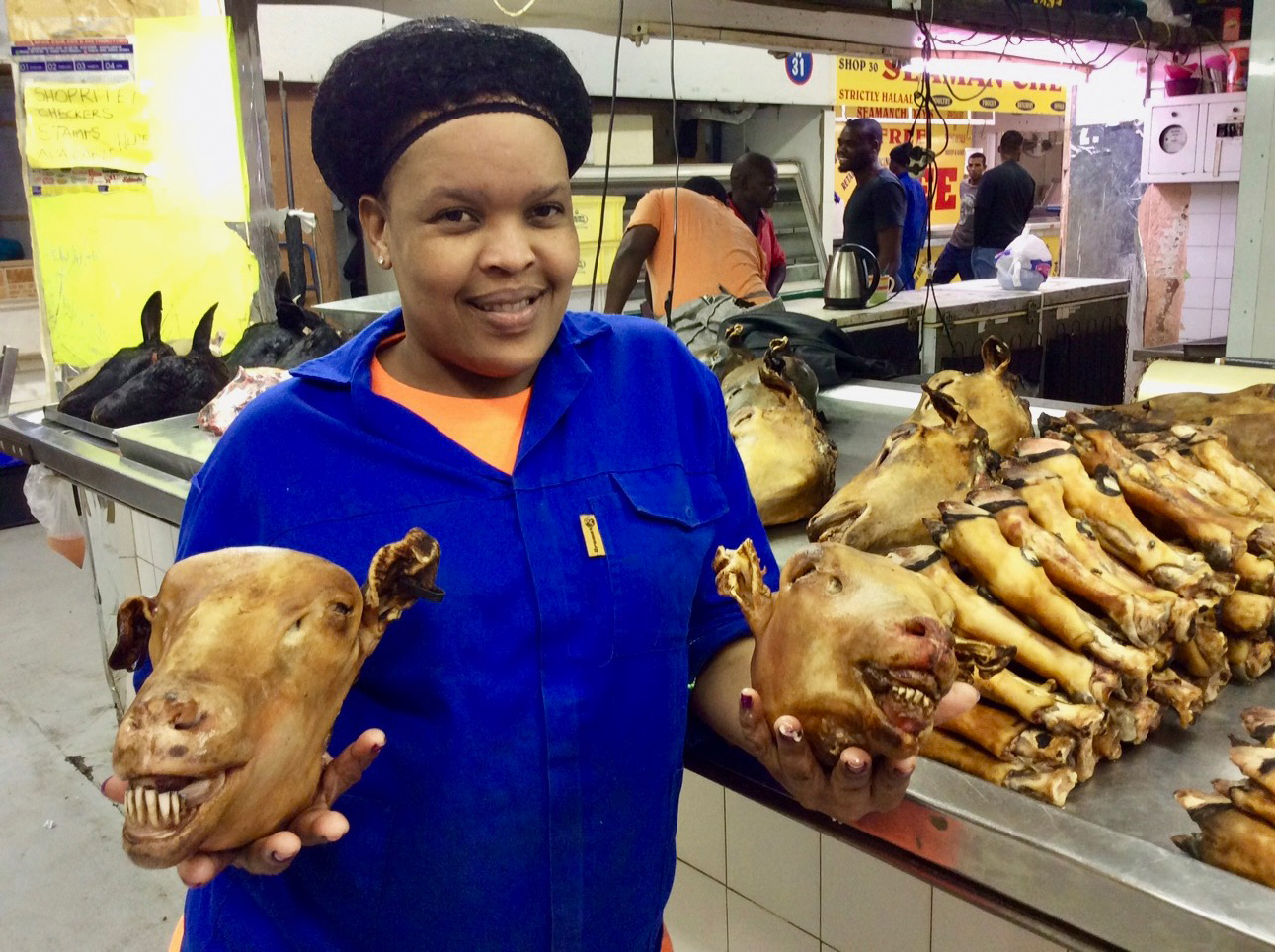
Nomcebo Thembu advises boiling or currying these sheep head ‘smileys’. Photo: Wanda Hennig
You’d better believe it. Not least the advice and personalised service.
Essop, when we’re done, leads me to Shop 1, next door in the Victoria Street Market, which is where she sends customers to buy their spices. We pass tourist buses parked outside spilling overseas visitors.
Inside, Sanusha Moodliar Ponen is waiting to fix me “anything you want” by way of flavour.

Spice girl Sanusha Moodliar Ponen says love is the secret ingredient in any blend. Photo: Wanda Hennig
“I’m brought up here, since a little girl. Me and my four sisters. My grandfather started the business. My grandparents had grains. My parents started with spices long before the (old Indian) market burned down (in 1973).”
They have dozens of spice blends heaped into bowls. Local ginger. Imported garlic. Olive-oil-based masala. Shisanyama spices. Mother-in-law-exterminator. “We make up the names,” she laughs, between calling me and everyone else “darling”.
“We have a cosmopolitan clientele. Black, white, Indian, tourists from all over the world.
“We Indians have been here for 150 years. We’re hands-on. We give you recipes.
“It’s the personal touch. Advise, explain, teach.”
And the big thing, she tells me: “Darling, everything is mixed with love. That’s the most important ingredient.”
I am directed to cross the street and walk through the Herb (muthi) Market to get to Warwick Avenue and the Early Morning Market. There I spot what is clearly a group of tourists. I stop and listen and hear their leader tell them he’s checked their email profiles and none are vegetarian so they can all sample the fare that will be served up where they’re going. A-ha. Clearly to the Bovine Head Cooking Market.
Sthembiso Mbonambi, director of Street Scene Tours, says sure I can join them – him and his group from the United States. Who get to see the entrepreneurial women from the bovine head team who have stepped into a man’s world out of necessity, to earn a living. (Men traditionally and ceremonially slaughter the cow, cook the head and eat the head meat.)
Here, bar a couple of exceptions, it is all women’s work. The woman with the axe who splits the skull so the head can fit into the pot where it is boiled. The women who slice the cooked meat – the cheeks are the speciality – and serve it on platters with the dumplings. To mainly male customers. The equivalent of the morning coffee klatsch.
At the Early Morning Market, I seek out Romila Chetty, secretary of the Early Morning Market Traders Association – like several others there, a fourth-generation trader.
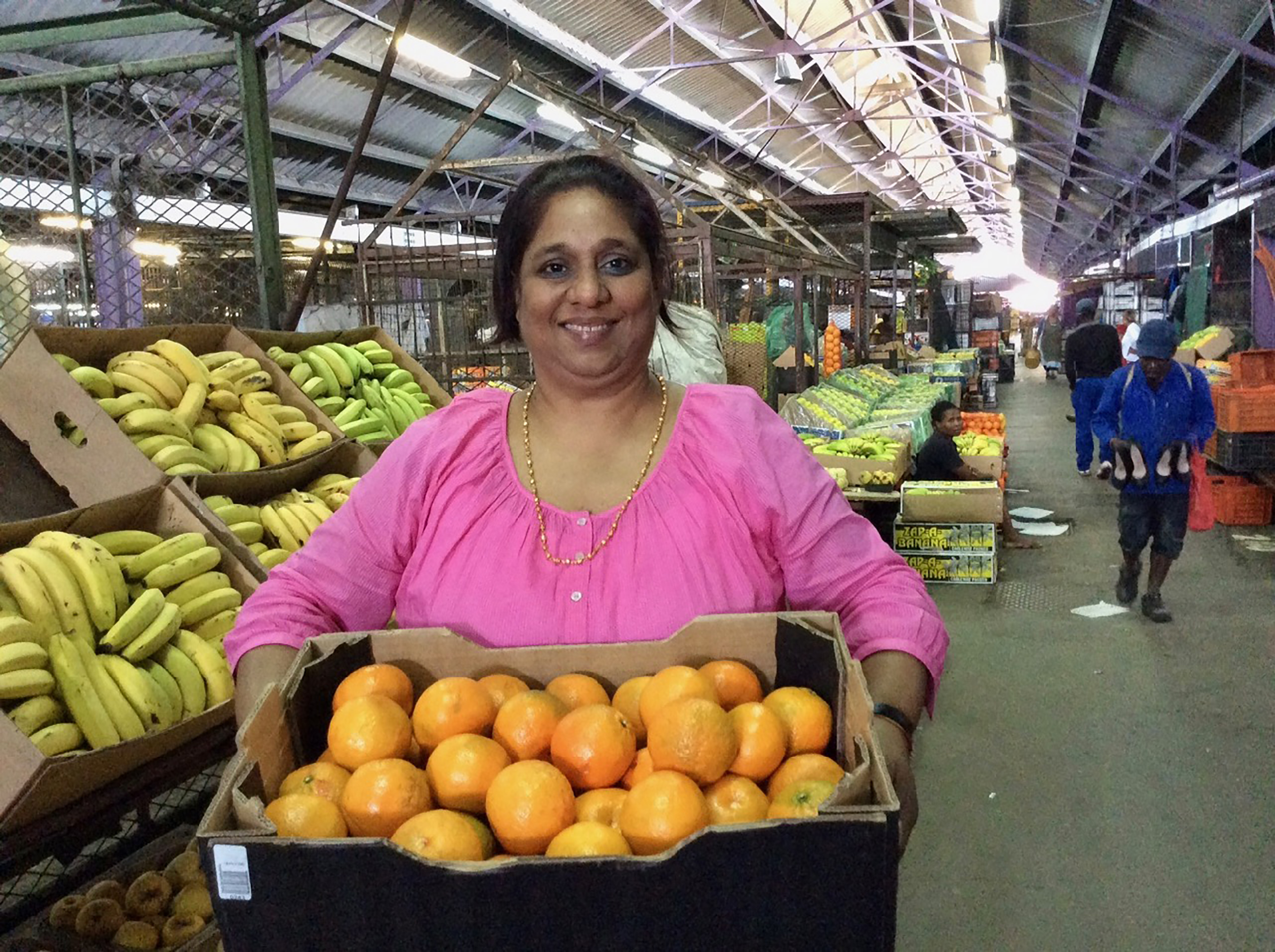
Activist by default, Romila Chetty, fourth-generation trader and secretary, Early Morning Market Traders Association. Photo: Wanda Hennig
An activist by circumstance and default, given her role in saving the market during the 2009 unsuccessful city onslaught on the traders and this heritage site. And having been a spokesperson for the traders ever since, trying to get upgrades to the market with its 619 traders, more than 700 workers and 200-300 porters – all with families to support.
“Forty years ago I would come here after high school to assist my dad. My great-grandfather was indentured. So I am a fourth-generation trader. It used to be so busy, there was no time to stop for a cup of tea.”
At one point, Chetty tells me, traders had to pay a surcharge if they sold produce bought from farmers direct and sold here and not bought from the city-owned bulk retail market on Flower Road, Clairwood. They fought this and “now there’s free enterprise – we can source from anywhere”.
Although a lot does come from the bulk market. And is sold “much cheaper than in the supermarkets” – as shown by the prices of the peppers and other fresh produce sold by plate and weight by Chandani Yerriah, another fourth-generation trader who has been selling at the market for 40 years.
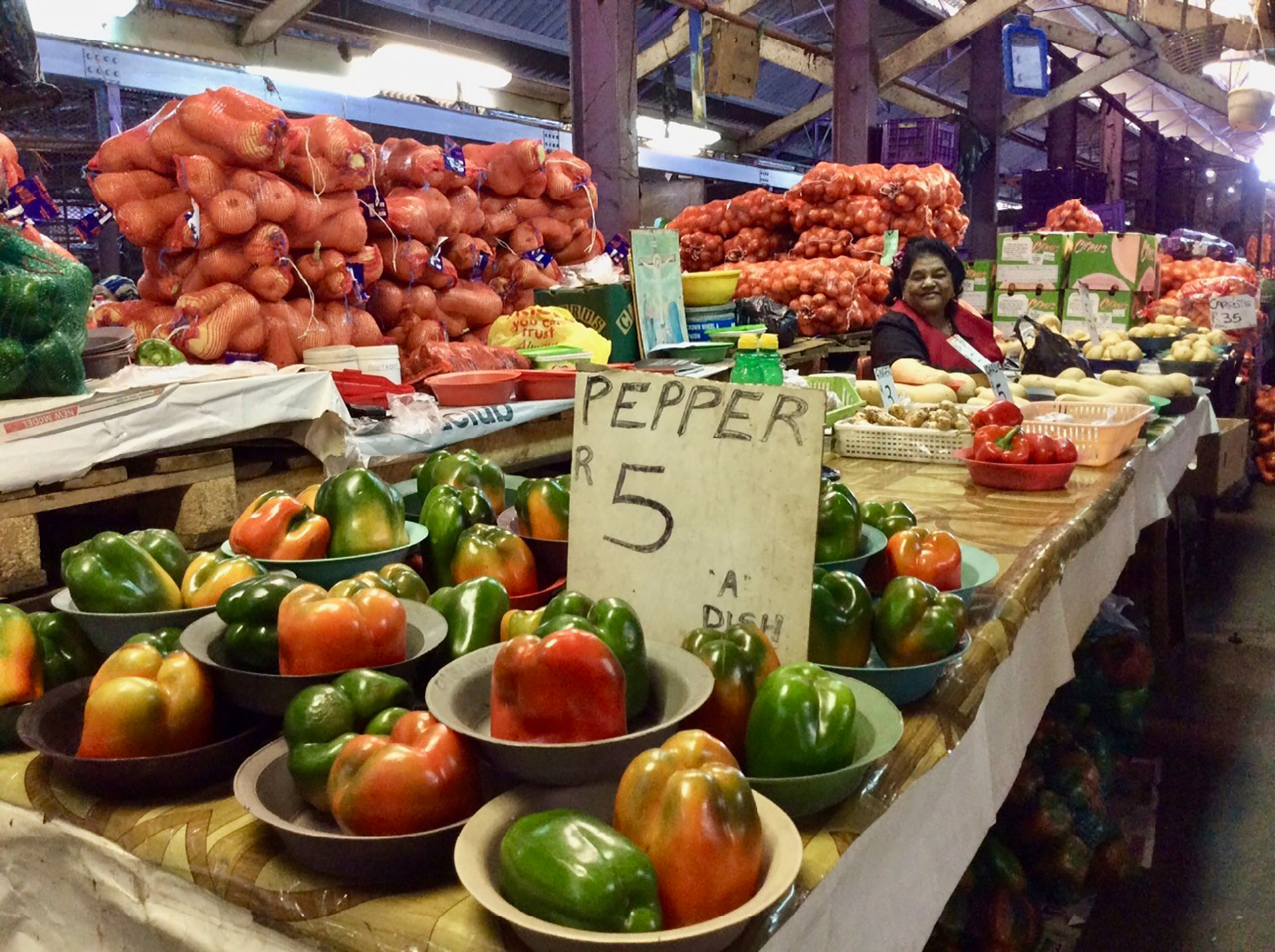
Fourth-generation trader Chandani Yerriah keeps check on price at the Early Morning Market. Photo: Wanda Hennig
Cool chilli sage, Money Govender, who can offer hot tips on habaneros and local red and green chillies, has been trading at the market for 30 years. Not surprisingly she’s popular, as is the rest of the market, with film crews.
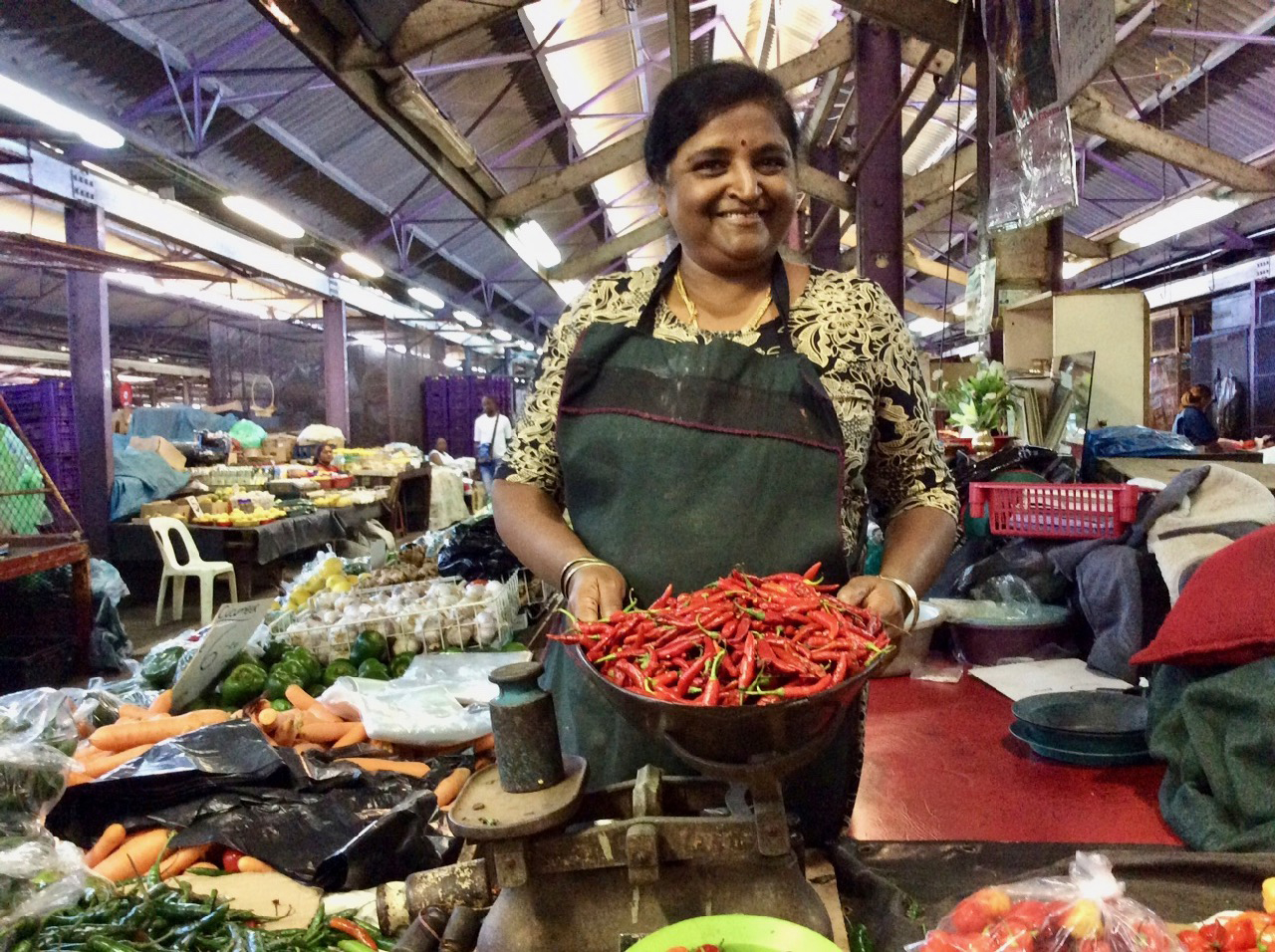
Money Govender has a wealth of knowledge of all things chilli. Photo: Wanda Hennig
And the “live chicken ladies” like Thokozane Mkheze, who sells white chickens for eating for R75 each – for those with the stomach or “tradition” to slaughter them at home – and small black chickens for rituals for R100. To customers who arrive by taxi, train and bus and carry them off in boxes.
Walking with Chetty, talking with Chetty, hearing the stories, meeting the market folk evoked memories and thoughts of food-focused markets in far-off villages, towns and cities. Old markets. Heritage markets. Markets with tradition. So much scope for good things to happen at this one. So many good reasons, even as things are, to do at least the occasional culinary shop at the markets of Warwick. DM
Wanda Hennig is a food and travel writer, based in Durban, who lived and wrote from San Francisco for 20+ years. She is the author of Cravings: A Zen-inspired memoir about sensual pleasures, freedom from dark places and living and eating with abandon (Say Yes Press, 2017). Reach her online via her website, Wandalust Online.



 Become an Insider
Become an Insider